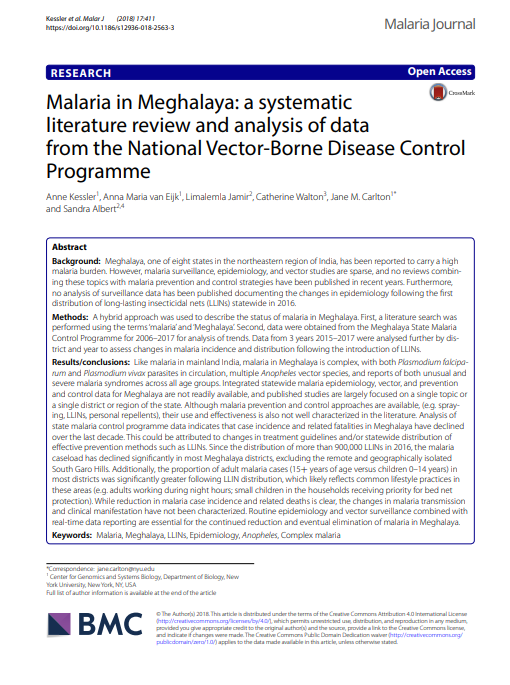
Malaria in Meghalaya: A Systematic Literature Review and Analysis of Data from the National Vector-Borne Disease Control Programme
Publication Year: 2018
Author(s): Kessler A, Eijk AM, Jamir L, Walton C, Carlton JM
Abstract:
Malaria has long been problematic in the mountainous state of Meghalaya, one of the eight northeastern states of India, known for their hilly, forested, and inaccessible regions, and for the indigenous/tribal people that live there. Although ‘indigenous peoples’ is a global term widely used in the literature, it is a contested term in India , and the Indian government instead uses the term ‘tribals’, or the constitutionally-recognized category of ‘Scheduled Tribes’ to refer to these communities in a countrywide sense. Tribal communities in India are particularly prone to malaria because of their geographical marginalization, poor access to health care, low socioeconomic status, and social factors including cultural and religious values, and beliefs. In Meghalaya, 86% of the state’s~3.5 million people belong to scheduled tribes . Most belong to the Khasi-Jaintia and/or Garo tribes, both of which are matrilineal, e.g., children take their mother’s name, and the youngest daughter inherits the ancestral land and looks after her parents in their elderly years
Source of Publication: BMC Part of Springer Nature
Publisher/Organisation: BMC Part of Springer Nature
URL:
https://malariajournal.biomedcentral.com/articles/10.1186/s12936-018-2563-3
Theme: Traditional Treatment- Communicable Diseases | Subtheme: Malaria



